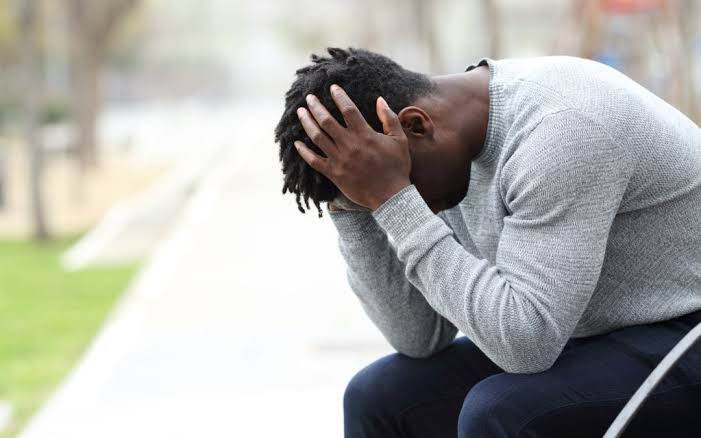Introduction: When the Darkness Has No Name
There are days when you wake up and everything feels heavy. Not just your body, but your thoughts, your spirit, even your breath. Nothing seems to matter. You may laugh with friends, post a smiling photo, and still feel like you’re disappearing inside. That’s not just sadness — that’s depression.
This isn’t some “mental health awareness” cliché. It’s real. It’s raw. It’s affecting millions, especially young people, and yet so many still suffer in silence. Let’s talk honestly about what depression really is, how it forms in the brain, why it happens, and what can actually help.
Depression vs Sadness: Understanding the Difference
Everyone feels sad from time to time. Maybe you lost something, someone or just had a bad week. But depression? That’s a whole different experience.
Sadness is a response. Depression is a condition.
Sadness fades with time. Depression lingers. Sadness usually has a cause. Depression sometimes shows up without warning. Sadness lets you cry and feel better. Depression makes you numb — and sometimes you can’t even cry.
People with depression can go through months or years of struggling, often without a visible reason. That’s what makes it so dangerous and misunderstood.
What Depression Looks Like – And What It Doesn’t
Depression isn’t always lying in bed and crying. Sometimes it looks like:
- The class joker who’s always making people laugh
- The workaholic who never stops to breathe
- The friend who always cancels plans last-minute
- The student who suddenly starts failing exams
Depression hides well — behind routines, behind jokes, behind the phrase “I’m fine.”
Inside the Depressed Brain: What Science Shows Us
Modern science has shown that depression isn’t just emotional — it’s deeply biological.
1. Neurochemical Imbalance
Certain chemicals in the brain affect our mood. The most important ones are:
- Serotonin: Regulates mood, appetite and sleep.
- Dopamine: Controls motivation and pleasure.
- Norepinephrine: Manages alertness and energy.
In people with depression, these chemicals may be too low or not functioning properly. It’s like trying to make a call with weak network signals — your thoughts and emotions can’t connect properly.
2. Brain Shrinkage
Long-term depression can shrink areas of the brain — especially the hippocampus (which affects memory) and the prefrontal cortex (which helps you plan and make decisions). This is why depressed people may feel confused, forgetful, or indecisive.
3. Inflammation in the Brain
Recent studies suggest depression may be linked to chronic inflammation in the brain. This inflammation affects how brain cells communicate — and could explain why depression often comes with fatigue and physical pain.
What Causes Depression? The Complex Web
1. Genetic Predisposition
If depression runs in your family, your chances of experiencing it increase. It’s not guaranteed — but genetics play a role in brain chemistry and personality traits like sensitivity.
2. Early Life Trauma
- Childhood abuse
- Neglect
- Bullying
- Loss of a parent
These experiences leave emotional scars — and they rewire how your brain processes stress and trust. Even in adulthood, your brain might still be reacting to old trauma.
3. Life Stressors
You don’t need a tragic past to be depressed. Everyday life can wear you down:
- Financial hardship
- Academic pressure
- Unemployment
- Social rejection
- Loss or heartbreak
Your mind keeps absorbing these hits until it just… stops coping.
4. Social Isolation
Humans need connection like we need oxygen. Being lonely for too long — even if you’re surrounded by people — is one of the biggest triggers of depression.
5. Physical Health Problems
Chronic pain, cancer, thyroid issues, and neurological conditions can trigger depression. So can hormonal changes (like during menstruation, pregnancy, or menopause).
6. Substance Abuse
Many people use alcohol or drugs to cope with emotional pain. But in the long run, they worsen chemical imbalances in the brain and deepen the depression.
The Different Types of Depression
Major Depressive Disorder (MDD)
The most common and severe form. It lasts at least two weeks and affects everyday life.
Persistent Depressive Disorder (Dysthymia)
A long-term, lower-grade depression. Lasts two years or more. The person may not even know they’re depressed — they’ve just always felt “off.”
Bipolar Disorder
Involves extreme mood swings — from highs (mania) to lows (depression).
Postpartum Depression
Happens after childbirth. Hormonal changes, exhaustion, and life adjustment can trigger this in new mothers.
Seasonal Affective Disorder (SAD)
Triggered by lack of sunlight, especially during winter. Leads to low energy, oversleeping, and mood dips.
How Depression Affects Daily Life
It’s not just about feeling sad. Depression changes how you:
- Eat (some overeat, others starve)
- Sleep (too much or too little)
- Think (negative thoughts, guilt, self-doubt)
- Move (fatigue, slow body movements)
- Love (emotional withdrawal or relationship issues)
- Work or study (low concentration, poor performance)
Even basic tasks like brushing your teeth or replying to a text can feel impossible.
The Depression and Suicide Connection
Many suicides don’t come from selfishness or attention-seeking. They come from people who feel like a burden. Who believe the world would be better without them. Who want the pain to stop — not their life.
If someone talks about:
- Feeling hopeless
- Wanting to disappear
- Saying goodbye in odd ways
- Giving away valuable items
Take it seriously. Ask them how they’re feeling. Encourage them to talk. Don’t judge. Listen.
Treatment Options: Yes, You Can Get Better
✅ Therapy
Talking to a trained professional helps you understand your patterns and learn healthy coping skills. Common types:
- Cognitive Behavioral Therapy (CBT)
- Psychodynamic Therapy
- Group Therapy
✅ Medication
Antidepressants are not magic pills. But for many, they rebalance brain chemicals and provide the energy needed to heal. Always consult a licensed psychiatrist.
✅ Lifestyle Changes
- Exercise: Even walking boosts mood-enhancing chemicals.
- Nutrition: Foods rich in omega-3, B-vitamins, and magnesium help the brain.
- Sleep hygiene: A regular sleep schedule repairs emotional balance.
- Limit alcohol and caffeine: They disrupt your nervous system.
✅ Spiritual Support
For many, faith offers comfort. But faith must walk hand-in-hand with practical help — not replace it. Prayer and therapy can coexist.
What You Can Do for a Depressed Friend
- Don’t offer advice — just offer presence.
- Avoid clichés like “Just be strong.”
- Encourage them to seek help.
- Check in regularly, even if they don’t reply.
- Respect their space but don’t disappear.
Sometimes, a single “How are you really doing?” can change someone’s life.
Final Words: There Is Hope
Depression is real, painful and complex — but it is also treatable. Many people who once felt hopeless now live full, joyful lives. Healing is not linear. It’s not overnight. But it’s possible.
So if you’re reading this and you’re struggling, remember: You’re not broken. You’re not alone. You matter.
Let’s keep talking about depression — not as a trend, but as a truth. The more we understand it, the more lives we can save.
Need Help? If you or someone you know is struggling with depression or suicidal thoughts, please speak to a mental health professional, call a helpline, or talk to someone you trust.
Join our Whatsapp channel to stay updated always!
Click here to join our Whatsapp channel


